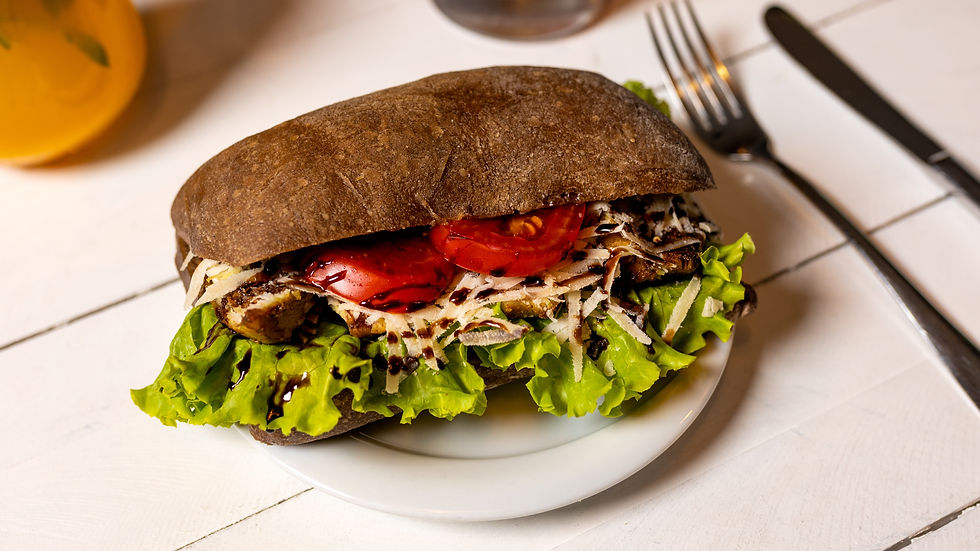Fueling For The Work Required: A Smarter Approach to Performance Nutrition
- Paul M Johnson - CNC,CSNC,PES

- Aug 10
- 3 min read

In endurance sports—especially triathlon, cycling, and running—nutrition isn’t just about eating healthy. It’s about fueling with purpose. The principle of "Fueling For The Work Required" is a performance nutrition strategy that matches your energy intake and macronutrient composition to the type, duration, and intensity of training you’re doing.
Instead of eating the same way every day, regardless of your training demands, this approach adapts your nutrition to optimize performance, recovery, and metabolic efficiency. It’s not just about carbs or calories—it’s about giving your body exactly what it needs, exactly when it needs it.
The Core Idea
"Fueling For The Work Required" means:
Higher energy and carbohydrate intake on high-intensity or long-duration training days.
Lower energy and carbohydrate intake on lighter training or recovery days.
Maintaining consistent protein intake to support muscle repair and adaptation.
Timing nutrients to support pre-workout preparation, intra-session fueling, and post-workout recovery.
This approach isn’t random—it’s based on sports science, where carbohydrate availability and glycogen storage play a major role in performance.
Why This Works
Optimizes Energy Use
You’re not overloading your body with carbs when you don’t need them.
On big training days, you’re ensuring your glycogen stores are topped up for peak performance.
Improves Metabolic Flexibility
Training with varied carbohydrate availability teaches your body to efficiently switch between fat and carbohydrate as fuel.
Low-carb sessions can enhance endurance adaptations; high-carb sessions maximize race-pace output.
Supports Recovery
Proper post-training refueling accelerates glycogen replenishment and muscle repair.
Under-fueling after intense days can slow adaptation and increase injury risk.
Prevents Unnecessary Weight Gain
Matching intake to training helps avoid the “I train so I can eat anything” trap.
Practical Application
1. Assess the Workload
Ask yourself:
Is today high intensity or low intensity?
Am I training for over 90 minutes or under 60 minutes?
Will I be doing intervals or steady endurance work?
2. Adjust Carbohydrate Intake
Here’s a simple guide:
Training Type | Carb Intake (g/kg bodyweight/day) |
Rest / Recovery Day | 3–5 g |
Low-Intensity Short (<1h) | 4–6 g |
Moderate (1–2h steady) | 5–7 g |
High-Intensity / Long | 7–10 g |
Example: A 70 kg athlete doing a 4-hour bike with intervals may need 490–700g carbs that day, while a rest day might only require 210–350g.
3. Pre-Workout Fueling
Low-intensity session: May train fasted or with minimal carbs (if planned as a “low glycogen” session).
High-intensity session: 1–4g carbs/kg bodyweight 1–4 hours before training.
Add a small protein source for satiety and muscle support.
4. During Training
<60 min easy: Usually no fueling needed.
60–90 min moderate: 30–60g carbs/hour.
>2 hours / high-intensity: 60–90g carbs/hour (mix glucose + fructose sources for maximum absorption).
5. Post-Workout Recovery
Within 30–60 min: 1–1.2g carbs/kg + 20–30g protein.
Include fluids and electrolytes to restore hydration balance.
Example Day Plans

High-Intensity Brick Session
Breakfast: Oats with banana, honey, and Greek yogurt.
Pre-bike snack: Sports drink + energy gel.
During bike: 60–80g carbs/hour from drink mix and chews.
Transition run: Sports drink or gels every 20 min.
Post: Chocolate milk + whole grain sandwich with lean protein.
Low-Intensity Swim + Strength
Breakfast: Veggie omelet with avocado.
Snack: Greek yogurt with berries.
Post-swim lunch: Salmon salad with quinoa.
Dinner: Grilled chicken with roasted vegetables and sweet potato.
Common Mistakes to Avoid
Fueling every session the same way – Your body’s needs vary.
Over-restricting carbs – Chronic low-carb intake can hurt performance and recovery.
Ignoring protein – Even on rest days, you need 1.6–2.2g/kg for repair.
Not practicing race fueling – Training is the time to test gels, drinks, and timing.
Final Thoughts
"Fueling For The Work Required" is about precision, not restriction. By adjusting what you eat to match your training demands, you’ll:
Perform better in key sessions.
Adapt more effectively.
Recover faster.
Avoid unnecessary weight gain or energy crashes.
It’s a strategy used by elite athletes worldwide—and when applied consistently, it works just as well for age-groupers aiming for their next PR or Full Distance Triathlon finish line.
Want your own personalized nutritional fueling plan? Go Here to learn more.

Comments